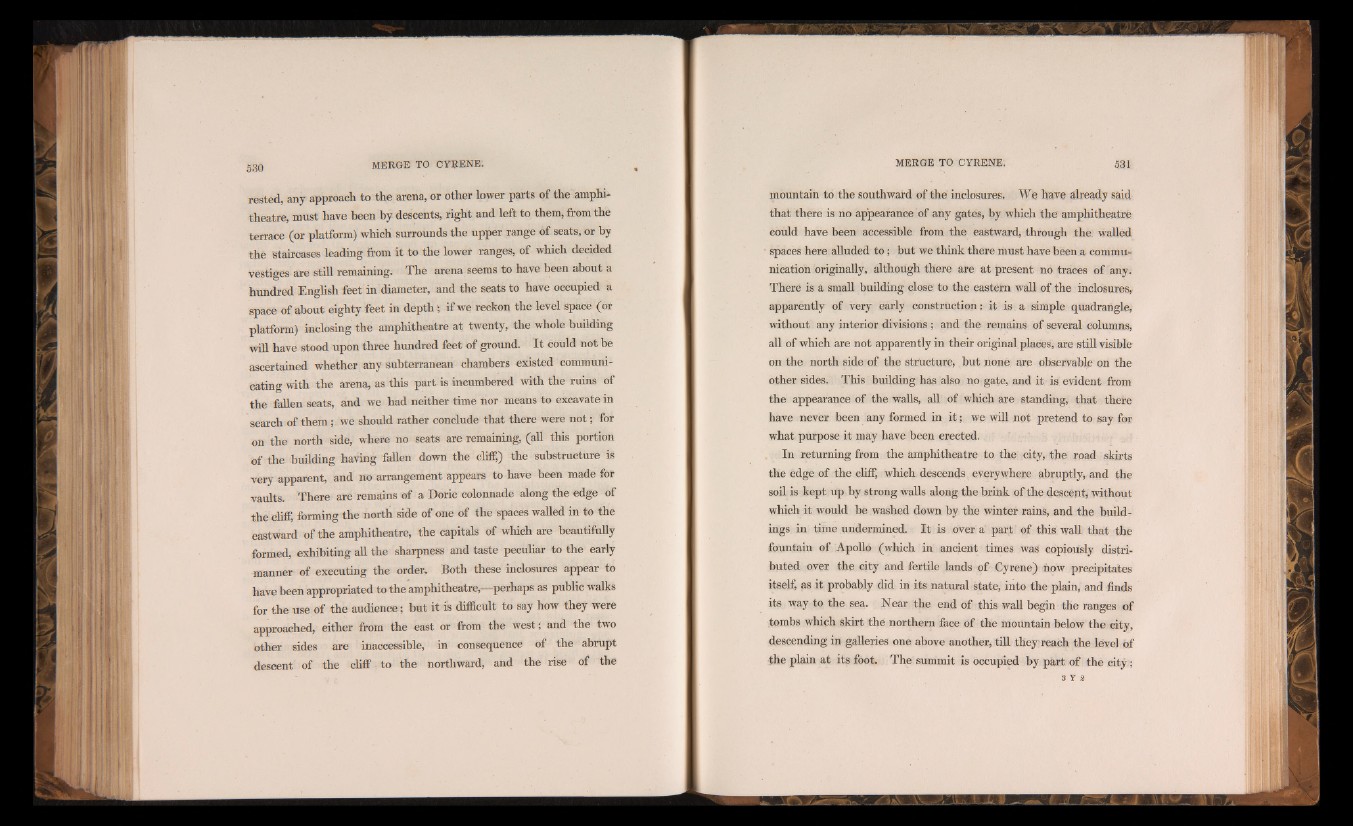
rested, any approach to the arena, or other lower parts of the amphitheatre,
must have been by descents, right and left to them, from the
terrace (or platform) which surrounds the upper range of seats, or by
the staircases leading from it to the lower ranges, of which decided
vestiges are still remaining. The arena seems to have been about a
hundred English feet in diameter, and the seats to have occupied a
space of about eighty feet in depth; if we reckon the level space (or
platform) inclosing the amphitheatre at twenty, the whole building
will have stood upon three hundred feet of ground. I t could not be
ascertained whether any subterranean chambers existed communicating
with the arena, as this part is incumbered with the ruins of
the fallen seats, and we had neither time ¿or means to excavate in
search of them; we should rather conclude that there were n o t; for
on the north side, where no seats are remaining, (all this portion
of the building having fallen down the cliff,) the substructure is
very apparent, and no arrangement appears to have been made for
vaults. There are remains of a Doric colonnade along the edge of
the cliff, forming the north side of one of the spaces walled in to the
eastward of the amphitheatre, the capitals of which are beautifully
formed, exhibiting all the sharpness and taste peculiar to the early
manner of executing the order. Both these inclosures appear to
have been appropriated to the amphitheatre,—perhaps as public walks
for the use of the audience; but it is difficult to say how they were
approached, either from the east or from the west; and the two
other sides are inaccessible, in consequence of the abrupt
descent of the cliff to the northward, and the rise of the
mountain to the southward of the inclosures. We have already said
that there is no appearance of any gates, by which the amphitheatre
could have been accessible from the eastward, through the walled
spaces here alluded to ; but we think there must have been a communication
originally, although there are at present no traces of any.
There is a small building close to the eastern wall of the inclosures,
apparently of very early construction: it is a simple quadrangle,
without any interior divisions ; and the remains of several columns,
all of which are not apparently in their original places, are still visible
on the north side of the structure, but none are observable on the
other sides. This building has also no gate, and it is evident from
the appearance of the walls, all of which are standing, that there
have never been any formed in i t ; we will not pretend to say for
what purpose it may have been erected.
In returning from the amphitheatre to the city, the road skirts
the edge of the cliff, which descends everywhere abruptly, and the
soil is kept up by strong walls along the brink of the descent, without
which it would be washed down by the winter rains, and the buildings
in time undermined. I t is over a part of this wall that the
fountain of Apollo (which in ancient times was copiously distributed
over the city and fertile lands of Gyrene) now precipitates
itself, as it probably did in its natural state, into the plain, and finds
its way to the sea. Near the end of this wall begin the ranges of
tombs which skirt the northern face of the mountain below the city,
descending in galleries one above another, till they reach the level of
the plain at its foot. The summit is occupied by part of the city ;